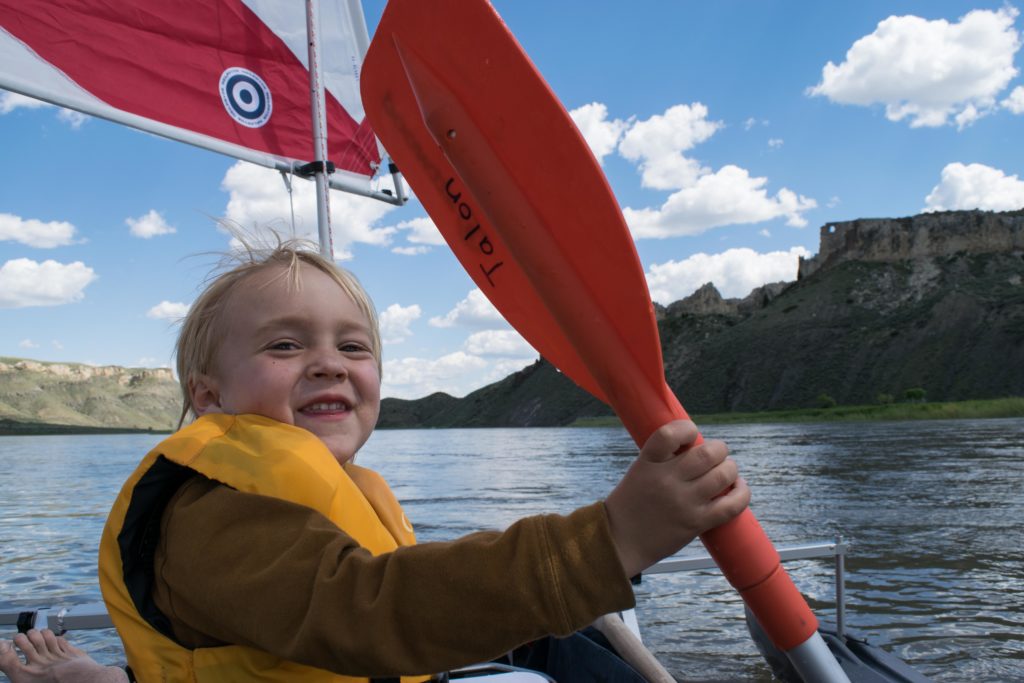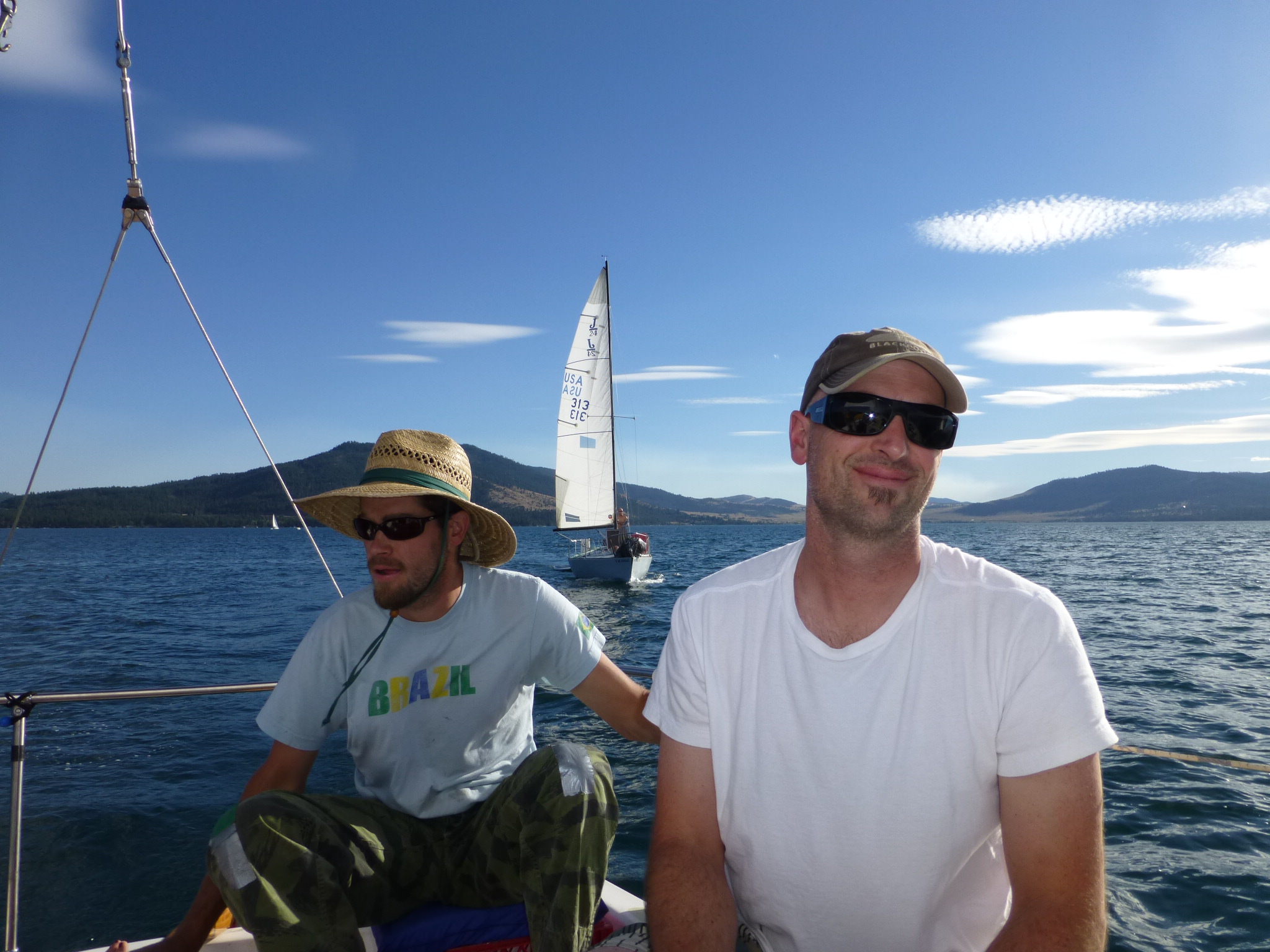Boating With Kamikaze Toddlers
When sailing with young kids, get off the boat often. (Seriously.)
This spring we bought a sailboat. It’s a half-century old, 22 feet long, and arrived in our driveway with “some assembly required.” Since sailing is my favorite hobby, I was ecstatic, envisioning lazy sunny days spent cruising over green lakes beneath blue mountains, followed by calm starry nights with the four of us nestled cozily in sleeping bags as we bobbed atop the water. After all, the boat’s name was Tranquilidad, which means ‘peace’ or ‘calm’ in Spanish.
Then — after some complicated assembly and many hours of repairs — we took her out for the first time. It was neither peaceful nor calm. In fact, after 24 hours aboard with two kids under five, I was half-tempted to leave our little sailboat at the boat ramp, too exhausted to deal with de-masting, unpacking, and re-trailering the damn thing. Spoiler alert: boating with babies is hard.
Let’s start with the one-year-old. Now fully mobile, Lyra was pretty miffed to be corralled in a tiny space. And restrained in a bulky life jacket. She made her dismay known with constant piercing screams and loud, grating cries.
Unfortunately, she figured out how to climb up on the narrow cockpit bench where she enjoyed jumping, surfing, running, reaching over the side, and otherwise attempting to kill herself. Reason, as you know, does not work on toddlers.

So we we tried to distract her from kamikaze behavior by offering toys down in the cabin. But she was more interested in dad’s shiny fishing lures, narrowly avoiding impaling herself on the hook. I tried food next, but she squeezed applesauce all over the bed and stomped the goldfish into orange dust on the floor.
Finally, I strapped her to my back with a sun hat atop her head, hoping she would nap so we could sail for a measly half-hour. She threw the hat overboard.

Now on to the five-year-old. Talon is a seasoned sailor, and no longer tries to hurl himself overboard. He also understands rational instructions and wears his life jacket happily. Whew. However, his enthusiasm for the sailboat was nearly as intense as the one-year-old’s frustration with it.
He wanted to fish, then snorkel, then swing from the boom, then paddle the inflatable dinghy … all within the first four minutes aboard. Helping him bounce safely between activities required one adult while the other parent dealt with sails, rudders, ropes and his screaming sister.

Finally, we anchored, nosing into a nook bordered by willows where the river flowed into the lake. The sunset was splendid, the peaks of the Swan Mountains spectacular, the still water a mirror of both. Rob and I took deep breaths (and maybe a shot of whiskey). Talon pointed out beavers and loons and herons as we ate dinner. Lyra smeared most of the noodles on her shirt, but babbled happily at the birds.
Once both kids were asleep, Rob and I settled on the cockpit benches in our own sleeping bags, watching nighthawks eat moths as the moon rose. I drifted off to sleep.

Until it started to rain on my face.
We scrambled to move bags and dishes, setting up a makeshift bed on the sofa/dining table. Somehow, we wedged both our bodies into the small space and actually fell asleep again.
Until Lyra woke crying.
We jigsawed ourselves so I could nurse her. Then, again, fell back asleep.
Until Rob had to pee. Until Talon thunked his head against the hull. Until the loon calls woke me in a panic, sounding like a wounded baby.
And so it went, until morning mercifully came and we started the fun-filled day of “sailing” all over again.

On the bright side, we learned a lot from our first sailboat outing this summer, which made subsequent trips with young kids (a little) easier:
- Get off the boat often. We now make sure to paddle to shore to swim, pick huckleberries, climb trees, and otherwise get everyone’s wiggles out. Tight spaces tend to get claustrophobic for everyone, especially toddlers.
- Spend more than one night. It’s a lot of work just to get the boat off the trailer and ready to sail, so more time on the water makes the effort worth it. Plus, the kids can get accustomed to the rhythm of the boat and find their own groove by day three.
- Factor in alone time. Even 20 minutes of child-free time helps each parent reset. We leave one adult to read quietly on the boat while the other paddles the kids to the beach, or send one parent off to hike or swim while the other reads stories at anchor.
Boating will continue to get easier, I know, just like most things we do with tots in tow. Meanwhile, I might rename our sailboat to something that more aptly describes the vibe aboard: Desorden, maybe, or Ruidoso.




















